Upside-down catfish - Synodontis nigriventris
Scientific name: Synodontis nigriventris
Common name: Upside-down catfish
Family: Mochokidae
Usual size in fish tanks: 9 - 10 cm (3.54 - 3.94 inch)
014
Recommended pH range: 6 - 8
Recommended water hardness: 4 - 12°N (71.43 - 214.29ppm)
0°C 32°F30°C 86°F
Recommended temperature range: 22 - 26 °C (71.6 - 78.8°F)
The way how these fish reproduce: Spawning
Where the species comes from: Africa
Temperament to its own species: peaceful
Temperament toward other fish species: peaceful
Usual place in the tank: Bottom levels
Origin
Upside-down catfish originate from Zaire and the Niger river basin. They are also to be found in the water ways of Cameroon and both of the Congo republics.
Lifespan
Expected life span is 5 and more years.
Short description
Synodontis nigriventris are best kept in small schools and hiding places should be provided in the tank. They are a very peaceful fish and they love to browse on the underside of broad leaved plants. They are one of the smaller catfish species, adults will only grow to a maximum size of 3.75 inches and they have adapted to being at excellent swimmers while upside down, this characteristic has also given them body markings to reflect this as they have evolved over the years. Their belly colouration is darker than their topside which is opposite to most species of fish that tend to have a darker top side. They tend to avoid the middle areas of the water column, feeding from the top surface in the wild and they will also explore the bottom of the aquarium, still in the upside down position.
The upside down catfish is classed as a peaceful species so are suitable for a community set up but do not keep these with aggressive species or they may become timid and shy, hiding away a lot in the daytime when the other tank mates are more active.
Food and feeding
In the wild, Upside-down catfish eat insects caught on the water surface and supplement their diet with algae. In the aquarium they adjust to flake and frozen foods easily but include live or frozen foods as well. It may be best to feed the upside down catfish in the evening when they are at their most active.
Sexing
Females tend to be larger than the males but have a duller coloration. They have a plumper outline as well.
Breeding
Condition the parents with plenty of live food to get them into spawning mode. Clay pots on their side or lengths of PVC piping should be added to the tank as this will provide them with spawning sites. The eggs should hatch after 2 days and the fry will become free swimming 3-4 days later. At this stage they can be given newly hatched brine shrimp.
The fry will not take on the swimming style of their parents until they are approximately two months of age but will swim normally until this age.
Pictures
Bought by aqua-fish.net from jjphoto.dk. Also thanks to Ala!
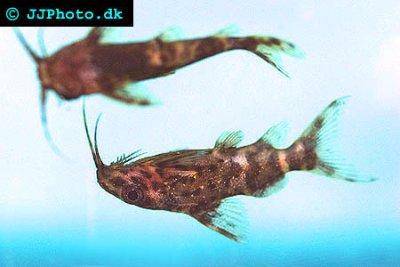



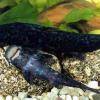 Euchilichthys
Euchilichthys 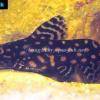 Angel
Angel 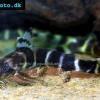 Brichard’s
Brichard’s  Decorated
Decorated 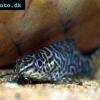 Featherfin
Featherfin 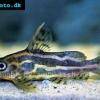 Orangestriped
Orangestriped 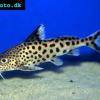 Cuckoo
Cuckoo 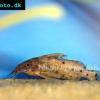 Lace
Lace 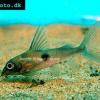 One
One 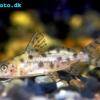 Ocellated
Ocellated 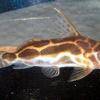 Robert’s
Robert’s